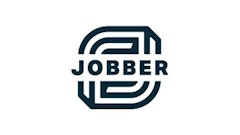
In today’s market, the major players in the lawn and landscape industry account for less than 5% of total market share. Instead, it’s the smaller companies, in many cases, the ones meticulously built with the intention of passing the business on to the next-generation owners, that together hold the majority stake of proportional revenue.
Here’s the trick, though. The sheer volume of these businesses have created an incredibly competitive marketplace, keeping each business’s individual portion of the revenue much smaller than the major players’. As such, these family-owned businesses should always be looking for opportunities to outcompete their peer competitors, while growing to bridge the gap left in market share by larger enterprises.
Incorporating technology across your business model is arguably one of the best, easiest and most reliable ways to do this. Yet historically, many first-generation business owners have been hesitant to adopt new technologies into their operations. There are many reasons for this. Older generations tend to feel less comfortable with new technology, especially if the benefits of implementation are not clear or immediate. Their businesses, especially when operating as single-person or small teams, haven’t always had the time or financial resources to invest in new technologies. And, of course, there is the age-old myth that the introduction of technology can detract from the personalized touch of more manual methods in customer service.
Now, though, many of these first-generation businesses find themselves at a crossroads, especially as business owners are relaying to pass their keys to the next generation waiting in the wings. And that brings us to a very interesting point in time for the lawn and landscape industry, as many first-generation business owners are readying to pass the keys to the next generation waiting in the wings. As they do, many of these businesses will find themselves making a turn at that crossroads that their company has previously avoided, doubling down on technology to reboot their business.
Next-generation owners have grown up alongside technology. It’s been an accessible and very present part of their everyday lives. As such, they tend to view the investment in technology as an expense every bit as necessary to their business operations as labor costs or insurance, knowing that long-term benefits can far outweigh initial investments. Not only that, but where these businesses have once been reluctant to embrace technology, now they are finding themselves on the front end of innovation as these next-generation wonders push for even more advanced machinery, equipment and software solutions.
When I look back, it’s almost mind-boggling to think how much of our business we did on paper. Only decades ago, scheduling happened on paper calendars. Jobs were estimated using hand-drawn designs, even scale rulers. Billing and bookkeeping meant hours hunched over a calculator.
Now, companies can run your business from anywhere, all with the help of cloud-based systems and mobile apps. There are drones and robots showing up alongside techs in the field. And, artificial intelligence (AI) is one of the most talked-about topics at every single industry or association event you go to. The opportunities available to these next-generation owners by leveraging this technology are truly endless, the kind of opportunities that can really disrupt and reboot the market we think we know.
It’s a shift of mentality we’re not only seeing in the existing workforce, but in the years preparing the next generations for the workforce, too. Studies have shown Gen Zers in particular are questioning the return on investment of a traditional four-year degree path, especially considering the skyrocketing costs and student loan burdens. They’ve been able to see – again, by having technology share the headlines with them with just a few clicks – all too well their predecessors struggle to find well-paying jobs, even after investing in higher education. As such, more and more young adults are strategically opting for trade school, or even jumping straight into the workforce to realize instant earnings and skill development. Many are also drawn to the entrepreneurial nature of this type of work (flexible scheduling, work-life balance, job creativity and time spent outdoors instead of in front of a desk) adding to the appeal.
Let’s look at a proven real-world example. Automation, in particular, has drastically improved how companies are tackling time-consuming areas of the business, like routing and scheduling. What used to require paper schedules and lots of back-and-forth to handle last-minute job changes, now companies can optimize crew routes to minimize time travel and fuel costs, reroute schedules during the day depending on scheduling changes, even tap in other techs if there’s an unexpected absence. Mobile apps allow field crews and office crews to communicate with each other in real time, and techs can even upsell customers from the field within the same system to reach even higher sales goals. All of this can be done at scale, meaning companies are able to take on more clients and expand service areas without adding overhead; a key milestone for scalable growth.
On the flipside, AI is a form of technology that is largely unproven in the industry to date, but holds immense potential to be a true market disruptor. While AI-powered technologies like chatbots and virtual assistants for better customer service and support have long-since been baked into the very best lawn care software, other tools, such as sophisticated predictive modeling for purchasing behavior or inventory management, or autonomous design and implementation technologies, are still largely untested in the market, it stands to reason that the first companies to incorporate these technologies successfully in their business models will have an undeniable advantage over the rest of their competitors.
As the industry continues to grow and adapt, it will be the businesses that are willing to invest in innovation and take calculated risks that will emerge as the next market leaders. The future belongs to those family-owned businesses that are willing to adapt, innovate and push the boundaries of what's possible.


























